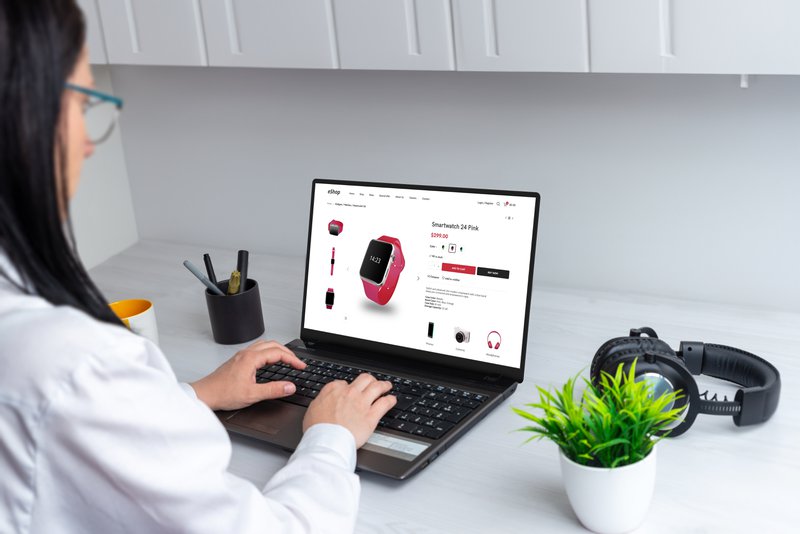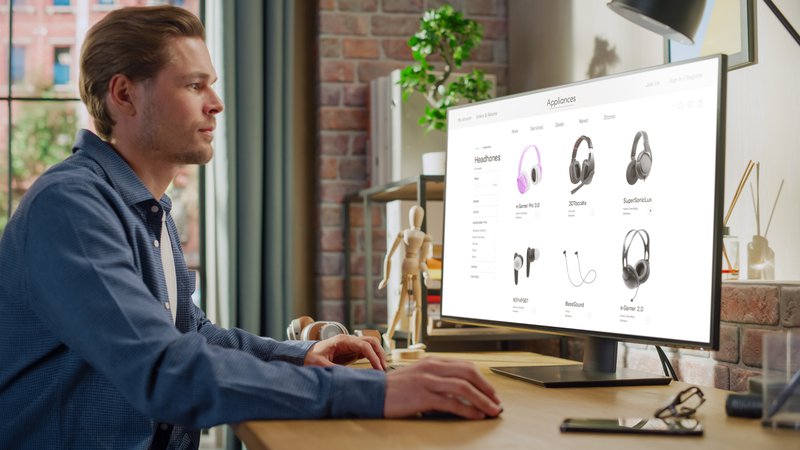Having the best products and prices won’t mean anything if your customers can’t see them. You need robust product merchandising tools to ensure your products are front and center and to make navigating your eCommerce site significantly easier.
Product merchandising can help generate more interest in your items. After all, not all products have the same popularity and demand. Determining which ones get searched more often is important and attracting buyers is important. Once you know your priorities, you can generate internal rankings to identify the products you should focus on.
Then, use powerful product merchandising tools to curate ideal product placements. This helps you keep popular products visible and encourages upselling and cross-selling. As a result, you’ll increase sales and produce better numbers across the board.
Understanding Internal Rankings: The Importance of Strategic Product Placement
Searching a website for a particular item can easily turn frustrating. When shopping in a large online store, having a strong search engine helps. However, store marketers should make sure that the ensuing search results prioritize relevant and popular items that are more likely to get picked up.

For example, say your store sells a variety of mugs that come in different designs. If a buyer searches for “mugs,” which one should you display first? Would you opt for the best-selling mug, or would you push for the item that needs help selling?
In most cases, strategic product placement can help you prioritize relevant and popular items. This is called internal ranking optimization—websites display items that more customers find engaging. When buyers search for products and encounter popular and engaging items first, they’re more likely to make a purchase.
Internally linking product pages with other pages (internal search engines and catalog pages) makes it easier for customers to find specific products. Internal rankings can also improve a product’s visibility when buyers use Google to search for it. A well-crafted product page has the right keywords, images, backlinks, and other elements to generate excellent search engine optimization (SEO) scores. It also helps Google understand how your site works as a whole, which can lead to a better search ranking.
Additionally, when buyers find your products within the first few pages of the search engine results page (SERP), they’re more likely to engage. They check out details and go over variants, ultimately proceeding with the purchase.
Leveraging Product Merchandising Tools: Curating Engaging and Conversion-Driven Product Displays
In general, product merchandising can improve your internal rankings. But retailers should always watch the whims of the market as well. When deciding which items to feature prominently in their store displays or internal search engine results, they should first consider what buyers want. Specifically, they need to optimize content that shows what buyers want to see.

Digital visual merchandising can help you resonate with specific buyer groups. It employs data analytics and insights to determine which products and product categories appeal to certain markets. Sellers can use this data to curate highly personalized recommendations that resonate with individual buyers.
When meticulous buyers search for products online, sellers that provide links to similar products can nudge them to eventually make a purchase. And with multiple models in front of them, shoppers can review the options from a single store owner.
In addition, retailers offering cross-sell and upsell bundles can help raise their average order values. For one thing, many customers find these bundles cheaper. Bundle purchases also save time compared to checking out individual items.
Utilizing Merchandising Tools To Boost Discoverability and CTR
Using the right product merchandising tools can help make customers more aware of your products. This increased discoverability also enhances your marketing campaign’s click-through rates (CTR). Together, these improvements will boost sales and bring a healthy increase to your revenues.
Today’s buyers look beyond product attributes when deliberating on a purchase decision. They also consider a brand’s popularity and reputation. That’s why, for these buyers, looking into social media and user popularity are important parts of the evaluation process.
Your product merchandising tool should have features that can help fulfill these requirements. Apart from the usual inventory, variant, and price displays, product pages should also feature metrics such as views, revenue, conversion rates, and abandonment rates of each product.
In addition, links to customer reviews and social proof scores can help seal the deal. Modern customers are so heavily influenced by social media that many purchase decisions depend on social proof. That’s why product pages embedded with social analytics offer validation by showing likes, forwards, and shares of relevant posts.
Enhancing UX and Purchases Through Internal Rankings
Today’s shoppers expect a user experience (UX) that’s both intuitive and easy to use. Product merchandising tools can use past search and purchase history to curate and display relevant products. Putting “recently viewed” items back in front of a buyer—particularly if those items are now on sale—can increase the chances of a purchase.

Internal page rankings should be equally intuitive and relevant. Product sequencing is a visual merchandising strategy that provides an order when a retailer lists or displays products. Buyers can choose the way products are shown, such as arranging them by category, price, size, color, or variation.
Compared to static catalogs that show products in a single order, buyers can find the items they want faster and more efficiently with dynamic catalogs. And when they find what they’re looking for, they’re more likely to click the “Buy” button sooner rather than later.
What’s more, advanced product merchandising tools don’t just provide automation when sorting products. They also feature advanced options such as hiding out-of-stock items and displaying inventories from other branches or countries.
Use the Right Product Merchandising Tools
When developing your digital storefront, build more than just web pages. Instead, create sales funnels that come in easy-to-use, intuitive, and highly integrated online stores. Get the right software for the job to squeeze the best performance from your product merchandising efforts.
Zobrist Software Group’s Smart Merchandiser lets you automate many merchandising functions to free up your sales and marketing teams. Using drag-and-drop simplicity, Smart Merchandiser helps you optimize your digital storefront without requiring coding or programming knowledge.
With regular use, buyers can look forward to a shopping experience that shows online product catalogs featuring the details they want. As a result, Smart Merchandiser helps brand marketing teams worldwide boost productivity by 70% and revenue by 20%. Sign up for a free demo to learn more about Smart Merchandiser.




